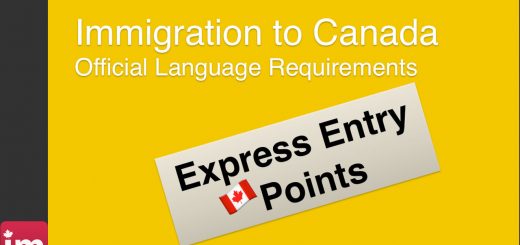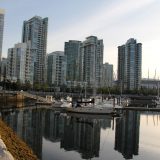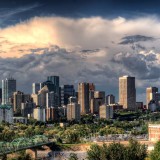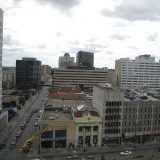NOC Codes and Express Entry
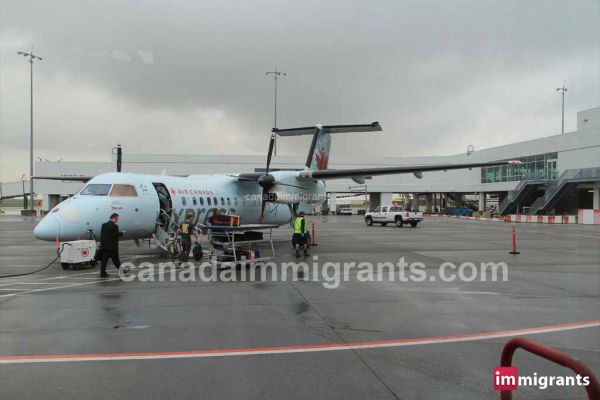
The National Occupational Classification (NOC) 2011 is a system for describing the occupations of Canadians. The NOC is a tool that is used to classify occupations according to their Skill Level and Skill Type. Each NOC code consists of four digits.
Because CIC assesses jobs against the 2011 version of the NOC, determining which NOC code correctly matches your work experience is very important to any application for permanent residence, especially when you are applying under the Express Entry Program.
Skill Type
There are 40 major groups in the NOC 2011 and these are classified as follows:
MANAGEMENT OCCUPATIONS
00 Senior management occupations
01-05 Specialized middle management occupations
06 Middle management occupations in retail and wholesale trade and customer services
07-09 Middle management occupations in trades, transportation, production and utililties
BUSINESS, FINANCE AND ADMINISTRATION OCCUPATIONS
11 Professional occupations in business and finance
12 Administrative and financial supervisors and administrative occupations
13 Finance, insurance and related business administrative occupations
14 Office support occupations
15 Distribution, tracking and scheduling co-ordination occupations
NATURAL AND APPLIED SCIENCES AND RELATED OCCUPATIONS
21 Professional occupations in natural and applied sciences
22 Technical occupations related to natural and applied sciences
HEALTH OCCUPATIONS
30 Professional occupations in nursing
31 Professional occupations in health (except Nursing)
32 Technical occupations in health
34 Assisting occupations in support of health services
OCCUPATIONS IN EDUCATION, LAW AND SOCIAL, COMMUNITY AND GOVERNMENT SERVICES
40 Professional occupations in education services
41 Professional occupations in law and social, community and government services
42 Paraprofessional occupations in legal, social, community and education services
43 Occupations in front-line public protection services
44 Care providers and educational, legal and public protection support occupations
OCCUPATIONS IN ART, CULTURE, RECREATION AND SPORT
51 Professional occupations in art and culture
52 Technical occupations in art, culture, recreation and sport
SALES AND SERVICE OCCUPATIONS
62 Retail sales supervisors and specialized sales occupations
63 Service supervisors and specialized service occupations
64 Sales representatives and salespersons – wholesale and retail trade
65 Service representatives and other customer and personal services occupations
66 Sales and support occupations
67 Service support and other service occupations n.e.c.
TRADES, TRANSPORT AND EQUIPMENT OPERATORS AND RELATED OCCUPATIONS
72 Industrial, electrical and construction trades
73 Maintenance and equipment operation trades
74 Other installers, repairers and servicers and material handlers
75 Transport and heavy equipment operation and related maintenance occupations
76 Trades helpers, construction labourers and related occupations
NATURAL RESOURCES, AGRICULTURE AND RELATED PRODUCTION OCCUPATIONS
82 Supervisors and technical occupations in natural resources, agriculture and related production
84 Workers in natural resources, agriculture and related production
86 Harvesting, landscaping and natural resources labourers
OCCUPATIONS IN MANUFACTURING AND UTILITIES
92 Processing, manufacturing and utilities supervisors and central control operators
94 Processing and manufacturing machine operators and related production workers
95 Assemblers in manufacturing
96 Labourers in processing, manufacturing and utilities
Minor Groups
The major groups are further divided at the three-digit level, into 140 minor groups.
Unit Groups
At the detailed four-digit level, the system is expanded into 500 occupational groups identified as unit groups, each with a unique code
Skill Levels
(For all non-management occupations the second digit of the numerical code corresponds to skill level.)
Skill level A (0 or 1)
- University degree (bachelor’s, master’s or doctorate)
Skill level B (2 or 3)
- Two to three years of post-secondary education at community college, institute of technology or CÉGEPor
- Two to five years of apprenticeship trainingor
- Three to four years of secondary school and more than two years of on-the-job training, occupation-specific training courses or specific work experience
- Occupations with supervisory responsibilities are also assigned to skill level B.
- Occupations with significant health and safety responsibilities (e.g., fire fighters, police officers and licensed practical nurses) are assigned to skill level B.
Skill level C (4 or 5)
- Completion of secondary school and some short-duration courses or training specific to the occupationor
- Some secondary school education, with up to two years of on-the-job training, training courses or specific work experience
Skill level D (6 or 7)
- Short work demonstration or on-the-job trainingor
- No formal educational requirements
Example:
7315 Aircraft mechanics and aircraft inspectors
7 The first digit indicates skill type category “TRADES, TRANSPORT AND EQUIPMENT OPERATORS AND RELATED OCCUPATIONS”
3 The second digit indicates skill level category B (Two to three years of post-secondary education at community college, institute of technology or CÉGEP)
15 Aircraft mechanics and inspectors (covers 155 titles).
Find your NOC
Sources:
http://www5.hrsdc.gc.ca/NOC/English/NOC/2011/Welcome.aspx
http://www.statcan.gc.ca/eng/subjects/standard/noc/2011/introduction



